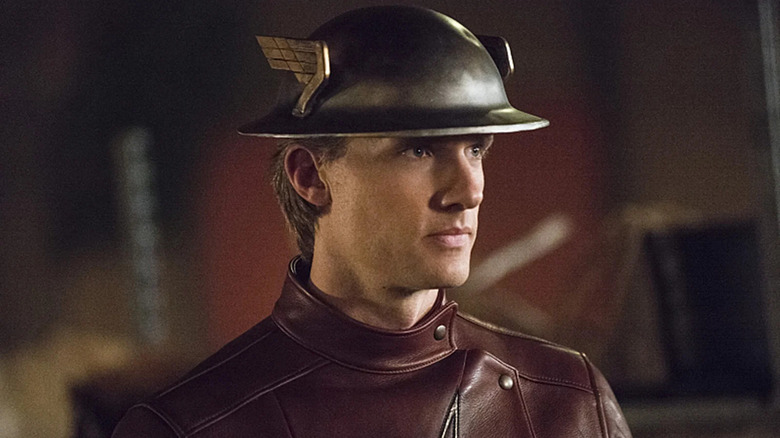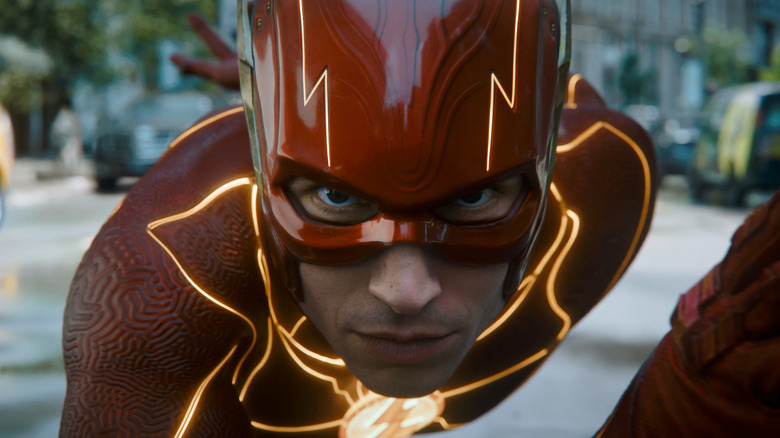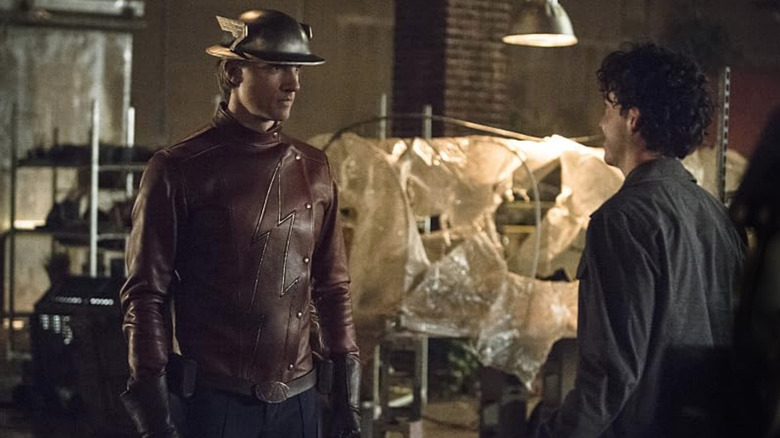No, That's Not Teddy Sears In The Flash – But It Sure Looks Like Him
This post contains spoilers for "The Flash."
It's hard to know where to start with "The Flash." The Scarlet Speedster's solo outing spent well over a decade in development and initially promised to serve as mainstream audiences' introduction to the concept of the multiverse ... only to be severely beaten to the punch. Now that it's finally playing in theaters following a heavy-handed promotional campaign, it's shaping up to be a historic box office blunder (and not an especially good one, either).
That's just a very crude précis of the whole thing. There's also the Ezra Miller of it all, along with the growing controversy over the movie's bewilderingly bad CGI (with director Andy Muschietti making the dubious claim that the weird VFX were "intended"). Meanwhile, the technique used to clone Miller was top-notch, which only adds to the tropical storm of confusion surrounding this movie.
So, while we're doing the whole confusion thing, why not add some more? If you're not up to date on the plot of "The Flash," it involves Miller's Barry Allen traveling back in time to save his mom's life, only to end up in an alternate timeline alongside an alternate version of himself, Michael Keaton's Batman, and Sasha Calle's Supergirl. After the ragtag group try to team up against Michael Shannon's Zod (returning from "Man of Steel"), there's a cataclysmic event that sees the very fabric of the multiverse begin to disintegrate. And among the various upsetting CGI cameos that arise from this multiversal collapse, there's one particular uncanny vision that seems to be causing its own mini controversy.
Cameo confusion
Prior to the ending of "The Flash," the two Barrys almost cause the multiverse to collapse completely while attempting to prevent their allies' deaths and defeat General Zod (despite these apparently being unalterable hinge events). Using the "chronobowl" — a visual representation of Barry's time travel abilities — Barry 2 refuses to give up on his mission to save his universe, as various orbs representing different universes begin to collapse into each other. Which, as it happens, gives Warner Bros. the perfect excuse to rack up some crowd-pleasing cameos as the orbs begin to reveal the inhabitants of their timelines. Alongside George Reeves' and Christopher Reeve's Supermen, Adam West's Batman, and Nicholas Cage fighting a giant spider, there's even a golden age version of The Flash, aka Jay Garrick.
Originally created by comic book legends Gardner Fox and Harry Lampert, Garrick first appeared in "Flash Comics" #1 all the way back in 1940. He was replaced by Barry Allen when DC decided to reboot the character in the 1950s, but has shown up in all sorts of media since, even forming a big part of The CW's "The Flash" show. In the second season, actor Teddy Sears was introduced as Garrick, before it was revealed that he was actually playing villain Hunter Zolomon/Zoom. And if you watch any YouTube breakdown videos for "The Flash" movie, or read any ending explainers, you'll see that pretty much everyone thought Sears was the man behind the Garrick cameo. Of course, nothing can be simple with this film, as exemplified by the fact that Sears actually had nothing to do with it.
A generic Flash
Ultimately, "The Flash" makes no sense, and things are no different with the Jay Garrick cameo. According to TV Line, who reportedly spoke to Teddy Sears, the actor wasn't involved with the movie at all. After being shown a screenshot of the cameo in question, he said, "I mean ... that looks like my likeness," but ultimately confirmed it's not him, adding, "Sadly, I'm not in this." He explained:
"People kept telling me that I was in the new 'Flash' movie. [...] I mean, I'm sleep-deprived with a newborn at home, so my memory is a little foggy. But I'm pretty sure I would have remembered shooting a major DC Studios film."
The outlet also claimed to have spoken to "well-placed sources on both the TV and theatrical side," who reportedly confirmed that Sears was not, in fact, in the movie, and that the cameo was supposed to be a generic Golden Age Flash. Which makes sense considering Sears' version of Jay Garrick was not, in fact, the character but a villain in disguise.
If anything, Andy Muschietti would have done better to throw in a John Wesley Shipp cameo for this moment, as he played the real Garrick on The CW's "Flash." Alas, this is yet another inexplicably bizarre moment in a movie that seems to almost revel in not making any sense whatsoever.


